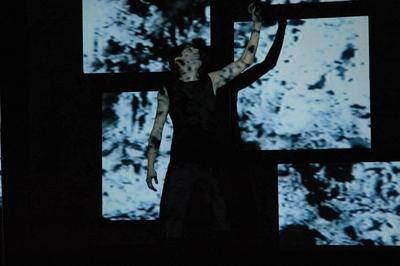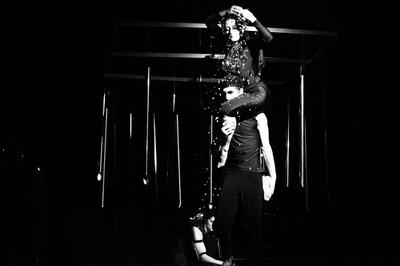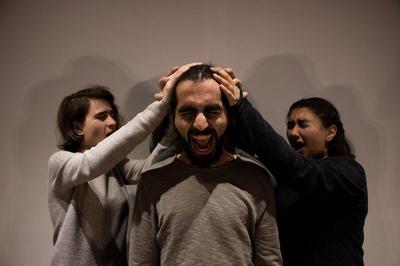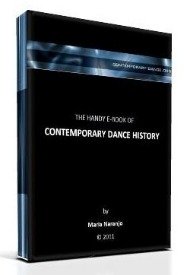When Ancient Dance Becomes Contemporary (English) by Artur Ghukasyan
by Artur Ghukasyan
(Yerevan, Armenia)
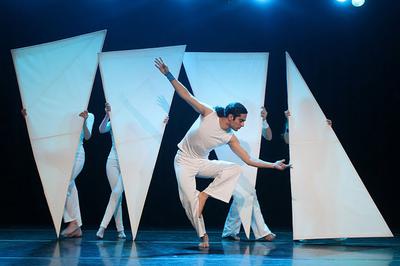
Description: After the Soviet Union, when Armenia regained its independence, a new generation was born. This article is about them.
WHEN ANCIENT DANCE BECOMES CONTEMPORARY:
For me, as an art manager, one of the challenges was to showcase and promote Armenian performing scenes outside of Armenia. This was one of the motivations to go and check all the performances in Armenia. Back in 2003 when I first met Tsolak MLKE-Galstyan and Mihr Theatre, they called themselves Mihr Theatre to refer to contemporary dance. I was very happy to see a contemporary dance company in Armenia. They were the first ones, who started to create in this genre, and from that date, I was keeping an eye on them.
I decided to write an article about them to show how the transformation from young encounters to the professional dance company.
HISTORICAL BACKGROUND
After the collapse of the Soviet Union, when Armenia regained its independence, the soviet censorship was abolished and a new generation of free thinking artists was born. Tsolak MLKE-Galstyan is one of that generation and has established Mihr theatre-the first contemporary dance company in Armenia with his sister Shoghakat MLKE-Galstyan in 2003.
THE BEGINNING
The Armenian national dances have the millenary history. They date from the pre-pagan era and each dance has its ritual, sacral and ideological peculiarities. Seeing for the first time Tsolak’s performance, I noticed the transformation of dance movements: from the national into the contemporary.
There are two major dance schools in Armenia; classical ballet school and traditional dance school, which also strives for the classical dance body. Refusal from the classical body and representation of the unlimited abilities of the body became Tsolak’s style. Having former classical and national dance education, Tsolak continued his education in Czech Republic, Latvia and USA and denied the classical limitations, taking as an example, the founders of the contemporary dances, who were creating in 60s of the previous century and didn't accept any limitation in dance. Sharing the stories, which create a dialogue with the audience in the body language, where the story becomes a foundation on which the choreography is being created. The stories must be full of life in order to become the fuel for a movement which transforms into a feeling. The sensitivity of the movement is one of the qualities of Tsolak’s style, which embraces the audience and transfers through the history of the performance.
The HIGH FEST International Performing Arts Festival is the platform, where I have always invited young and promising artists, who throw down the gauntlet to the stereotypes and intolerance.
For the first time, ''Mihr'' theatre participated in the HIGH FEST International Performing Arts Festival in 2004 with their performance ''Creation'' and all the international premieres of the theatre take place in the framework of the HIGH FEST International Performing Arts Festival up to now.
FROM MOVEMENT TO COLOUR
The path of creating multilayered performances began with the performance ''The Colours''. Colours, experiments, movements and the theme of the performance merged here. It is the story of four colours, which are living in hostility, love and indifference. The movement has no end: it begins and becomes a colour. The performance is an action-painting and each character is having its mirror reflection on the white platforms. The movement transforms into an image, the image transforms into a movement; the border between painting and dance disappears.
FROM VOICE TO MOVEMENT
Komitas Vardapet (priest) saved a huge layer of the Armenian music and he is a collective image of the intellectual of the time.
One of the performances of ''Mihr'' Theatre which is called ''Komitas 10 Commandments'' is based on the letters of Komitas, which tell us how Komitas has collected folk songs in the villages of Western Armenia, had solo concerts in the stages of Paris and Berlin, has passed through the hell of
The choreography of the performance is based on the pauses and there is an approach which I will call dance without movement, i.e., the dance action happens but the movements are inside the dancer. Tsolak merged the theme and music of Komitas, the light which touches the bodies, with choreography and made them a whole.
SEARCH FROM MOVEMENT TO VOICE
''The Sound of Loneliness'' is the performance-project, which is revolutionary in its way of thinking. Tsolak called this format ''music of movement''. The project consists of two musical instruments created from scratch, in which the dancers turn each of their movements into music. All of this hasn't been done in a digital way, it is near to the format of the classical music where percussion and vocal approaches are being used. There are three characters on the stage; Prisoner, Turnkey and Loneliness.Loneliness is the only feeling which will never leave you alone.
PAIN AS A MOVEMENT
The history of a nation is always reflected in the works of artists.
In 1915 in the territory of the Ottoman Empire, which Armenians call Western Armenia, the Armenian Genocide has been implemented. After 100 years the genocide hasn't been recognized.
In 2015 ''Mihr'' theatre and ''Gabrielle Neuhaus'' physical theatre created Armenian-Israeli joint performance ''Lavash'' dedicated to the 100th anniversary of the Armenian Genocide. Lavash is the Armenian national bread: the idea of bread as national culture and Genocide as a attempt to annihilate the culture. Tsolak MLKE-Galstyan and Gabrielle Neuhaus created the work in which sensitive movement tells the audience what it is like to be a nation, which survived the Genocide.
''Tiezerk'' band, which has already become the inseparable part of ''Mihr'' theatre, by performing the Armenian national melodies, led the audience to the deep experience of loss.
Lavash as bread; lavash as culture, lavash as dance.
UNLIMITED DANCE
Each body is special and it can reveal new horizons in movement. ''We'' inclusive contemporary dance performance is a question addressed to the society. It is an inclusive dance performance, where there is no limits for the performers and the movements merge with the performers as the insperable part of them. There is no difference between dancers, between their movements and bodies. There is a dance and there is a body, which dances without limits.
Original music by ''Tiezerk'' band, which connects the audience with the dancers, creates echo in them.
This is a performance-discussion, where the question is addressed to the audience: ''How much are we ready to be supportive and tolerant?''
DANCE AS A JOURNEY
Times have always been difficult and the people, who lost their homes or fled the war and turned into the refugees, have always been.
''The Song of a Refugee'' is a site-specific performance, which is based on the national melodies of ''the songs of a refugee'', which are the whole layer of the national music. The performance is a journey, which the the audience goes through in with the performers, who, through movement and music, are passing the path which has no end
One of the central points of the design of the performance is the art work with the same name: ''The Song of a Refugee'' by the Armenian sculptor Heriqnaz Galstyan.
The choreography which merges the movement and the song, because the performers are the refugees, who, with their songs, fill in their way to uncertainty.
''Mihr'' is a theatre, which turns history into dance. They are young people, who are creating by being inspired from the themes which surround them now. They are the people who have their own way and do not copy. For Tsolak, the colour is a dance, the pain is a dance, the memory is a dance and the journey is a dance.
Submitted to contemporary-dance.org by Mr. Artur Ghukasyan, June 2020.
Join in and write your own page! It's easy to do. How? Simply click here to return to Articles.
The handy e-book of CONTEMPORARY DANCE HISTORY:
The Dance Thinker is our occasional E-zine. Fill in the form below to receive it for free and join us.
Read:
"The Dance Thinker"
BACK ISSUES
Post contemporary dance announcements (workshops, auditions, performances, meetings and important news... it is free.)
